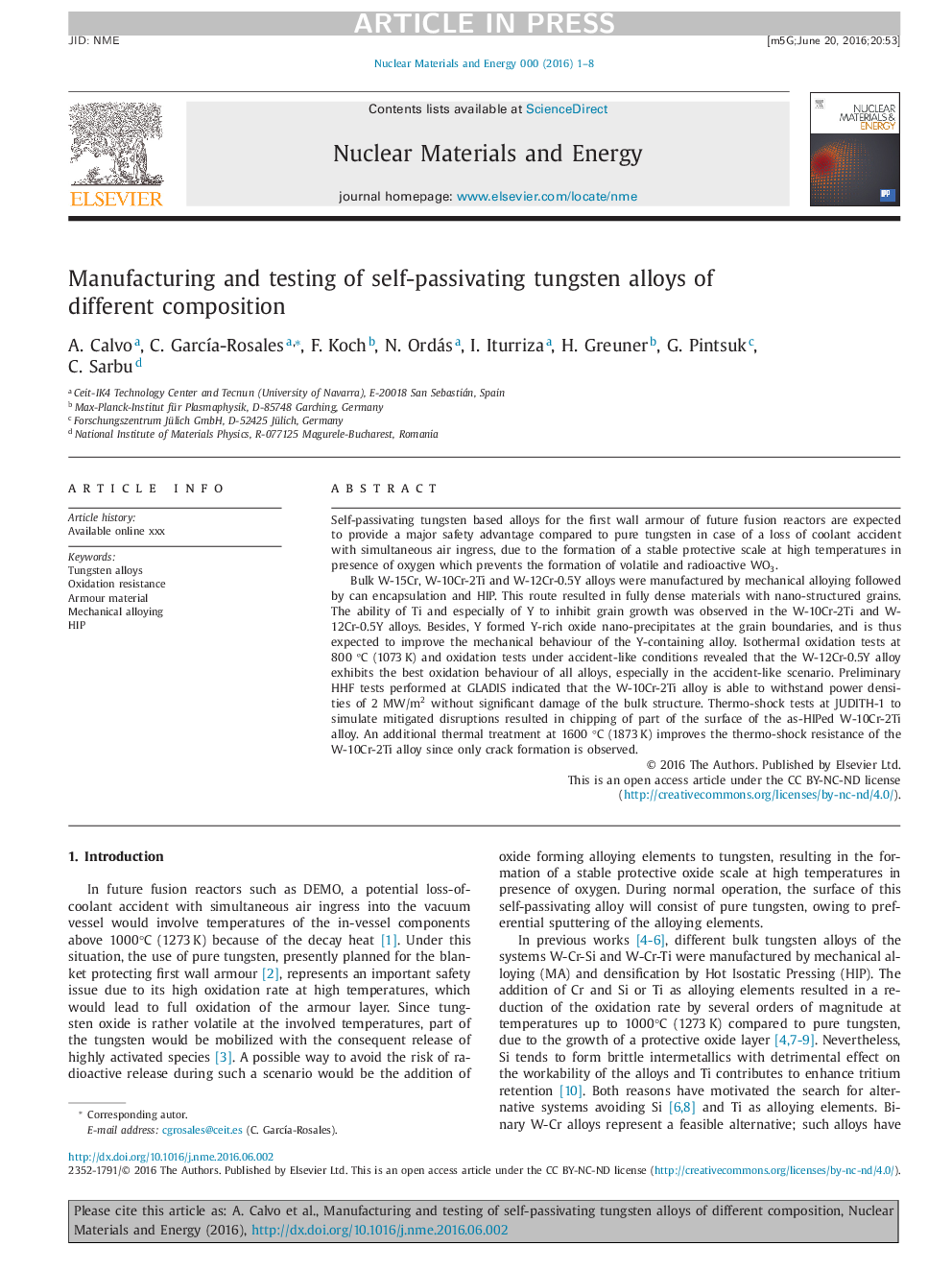| Article ID | Journal | Published Year | Pages | File Type |
|---|---|---|---|---|
| 7987652 | Nuclear Materials and Energy | 2016 | 8 Pages |
Abstract
Bulk W-15Cr, W-10Cr-2Ti and W-12Cr-0.5Y alloys were manufactured by mechanical alloying followed by can encapsulation and HIP. This route resulted in fully dense materials with nano-structured grains. The ability of Ti and especially of Y to inhibit grain growth was observed in the W-10Cr-2Ti and W-12Cr-0.5Y alloys. Besides, Y formed Y-rich oxide nano-precipitates at the grain boundaries, and is thus expected to improve the mechanical behaviour of the Y-containing alloy. Isothermal oxidation tests at 800 ºC (1073 K) and oxidation tests under accident-like conditions revealed that the W-12Cr-0.5Y alloy exhibits the best oxidation behaviour of all alloys, especially in the accident-like scenario. Preliminary HHF tests performed at GLADIS indicated that the W-10Cr-2Ti alloy is able to withstand power densities of 2 MW/m2 without significant damage of the bulk structure. Thermo-shock tests at JUDITH-1 to simulate mitigated disruptions resulted in chipping of part of the surface of the as-HIPed W-10Cr-2Ti alloy. An additional thermal treatment at 1600 °C (1873 K) improves the thermo-shock resistance of the W-10Cr-2Ti alloy since only crack formation is observed.
Related Topics
Physical Sciences and Engineering
Energy
Nuclear Energy and Engineering
Authors
A. Calvo, C. GarcÃa-Rosales, F. Koch, N. Ordás, I. Iturriza, H. Greuner, G. Pintsuk, C. Sarbu,
